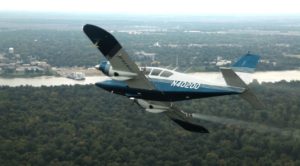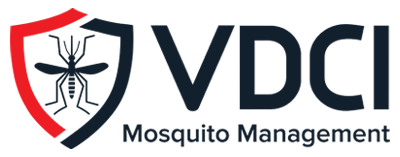Adult Mosquito Management
For districts, counties, or municipalities, it can feel that when the mosquito season starts, the clock also starts. It won’t be long before residents begin to contact local leaders to help reduce mosquito populations in their communities. If a threat becomes too great, often aerial applications are conducted. The Mission: To reduce large nuisance populations and kill as many mosquitoes that could carry vector-borne diseases as possible. Timing during this mission is a top concern.
 Whether larviciding or adulticiding, timing in Aerial Mosquito Control is an extremely critical component. Knowing the amount of time that is required to go through all the protocols, preflight the aircraft, and be able to hit the “spray on” switch at the exact specified time, to ensure a successful mission, can sometimes present its challenges – but must be accomplished.
Whether larviciding or adulticiding, timing in Aerial Mosquito Control is an extremely critical component. Knowing the amount of time that is required to go through all the protocols, preflight the aircraft, and be able to hit the “spray on” switch at the exact specified time, to ensure a successful mission, can sometimes present its challenges – but must be accomplished.
Adulticing: On Time and On Target
Before an aerial operation can take place, there are significant factors that must coincide with timing. We have outlined a short list of protocols that must be followed while conducting an aerial adulticide mission.
Who, What, Where, When?
 First, we need to determine what species we are trying to control. Different species of mosquitoes have different flight patterns and peak activity. Culex pipiens prefer to feed up to 2 hours after sunset compared to Cx. tarsalis (shown in image) who will only feed for up to 1 hour after sunset. Exact application time to target specific species is crucial. VDCI recommends the use of rotator traps to determine exact flight times of targeted species in a given area. Forethought on behalf of the beneficial insects needs to be considered as well. Next, a detailed map should be utilized to review the exact location that the application is desired. Then, both parties should review what product is being considered for application. Once the product is determined, aerial applicators will revisit their flight plan to ensure the mission dispenses the correct amount of chemical out of the aircraft as not to exceed the time allotment. Throughout the entire process, the mosquito control team should answer all questions, address all concerns, and maintain clear communication with the customer.
First, we need to determine what species we are trying to control. Different species of mosquitoes have different flight patterns and peak activity. Culex pipiens prefer to feed up to 2 hours after sunset compared to Cx. tarsalis (shown in image) who will only feed for up to 1 hour after sunset. Exact application time to target specific species is crucial. VDCI recommends the use of rotator traps to determine exact flight times of targeted species in a given area. Forethought on behalf of the beneficial insects needs to be considered as well. Next, a detailed map should be utilized to review the exact location that the application is desired. Then, both parties should review what product is being considered for application. Once the product is determined, aerial applicators will revisit their flight plan to ensure the mission dispenses the correct amount of chemical out of the aircraft as not to exceed the time allotment. Throughout the entire process, the mosquito control team should answer all questions, address all concerns, and maintain clear communication with the customer.
Contact Local Law Enforcement
Many application areas will require coordination with local law enforcement. When mosquito control aircraft fly over populated areas at 300 ft, the low flight path can generate additional phone calls into the police dispatch centers. Providing the local centers with advanced knowledge of a scheduled flight can help ease concerns of residents.
Contact Local Federal Aviation Administration (FAA) Control Towers and Controlling Agencies
Communication with local aviation agencies is a very important aspect as well. Typically, a mission over congested areas also includes flying within FAA controlled airspace. Proper coordination prevents two aircraft from occupying the same airspace at the same time.
File a Notice to Air Missions (NOTAM) with the FAA
Filing an NOTAM will allow another pilot in the area, that may not be in contact with a control tower, to be aware of the area and altitude that local mosquito control will be conducting operations.
Weather Factors
Anything from temperature inversions to gusty conditions must be factored into the timing of an application. Temperature inversions are common at night and seem to be most prominent right after sunset. Depending on the inversion level, it may require an altitude adjustment of the aircraft. Wind conditions and the tracking of storms must also be given attention. Will we be able to get the product out and to the target site before the wind increases or a thunderstorm starts? Or should we wait? Understanding the environmental conditions of an area is an important part of completing a successful mission.
Larviciding: Best Conditions, Best Results
Larvicidng, when compared to adulticiding, can offer applicators a little more breathing room throughout a mission. Instead of windows delegated by hours, an aerial applicator can have a few days. Even in the hottest days of summer, a successful mission can be spread over as many as 3 days to get the pesticide to the larvae and achieve desired results. This provides mosquito control pilots with more opportunities to make a precise application under the best conditions.
Contact Us to Learn More About Aerial Mosquito Management:
 Since 1992, Vector Disease Control International (VDCI) has taken pride in providing municipalities, mosquito abatement districts, industrial sites, planned communities, homeowners associations, and golf courses with the tools they need to run effective mosquito control programs. We are determined to protect the public health of the communities in which we operate. Our mosquito control professionals have over 100 years of combined experience in the field of public health, specifically vector disease control. We strive to provide the most effective and scientifically sound mosquito surveillance and control programs possible based on an Integrated Mosquito Management approach recommended by the American Mosquito Control Association (AMCA) and Centers for Disease Control and Prevention (CDC). VDCI is the only company in the country that can manage all aspects of an integrated mosquito management program, from surveillance to disease testing to aerial application in emergency situations.
Since 1992, Vector Disease Control International (VDCI) has taken pride in providing municipalities, mosquito abatement districts, industrial sites, planned communities, homeowners associations, and golf courses with the tools they need to run effective mosquito control programs. We are determined to protect the public health of the communities in which we operate. Our mosquito control professionals have over 100 years of combined experience in the field of public health, specifically vector disease control. We strive to provide the most effective and scientifically sound mosquito surveillance and control programs possible based on an Integrated Mosquito Management approach recommended by the American Mosquito Control Association (AMCA) and Centers for Disease Control and Prevention (CDC). VDCI is the only company in the country that can manage all aspects of an integrated mosquito management program, from surveillance to disease testing to aerial application in emergency situations.


